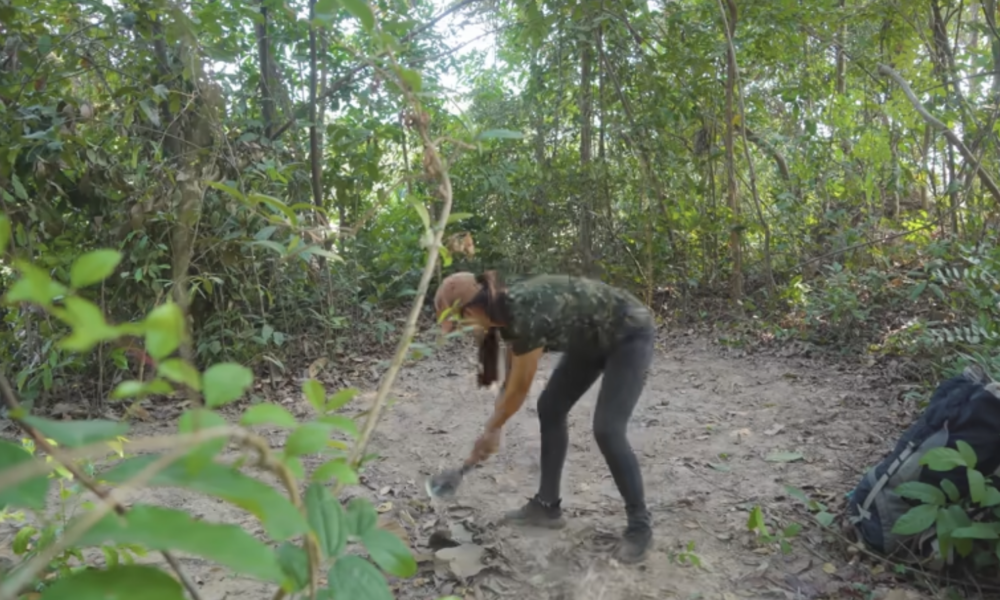Building a Dream: One Woman’s Underground Oasis
This blog post explores the incredible journey of a young woman who built her own self-sufficient, off-grid underground villa. Forget tiny houses; this is a testament to human ingenuity and a deep connection with nature. Prepare to be inspired!
From Vision to Reality: Planning and Preparation
Choosing the Perfect Location
The video begins with our determined builder selecting a secluded, natural setting for her ambitious project. The emphasis is on integration, not disruption. The chosen spot provides natural shelter, minimizing the need for extensive excavation and maximizing the use of existing land features. This careful site selection is a crucial first step, highlighting the importance of environmental sensitivity in off-grid living.

Meticulous Planning for an Underground Home
Before a single shovelful of earth was moved, meticulous planning was key. Detailed measurements and careful consideration of the villa’s layout ensured both structural stability and optimal space utilization. This proactive approach emphasizes the importance of thorough preparation in such a demanding undertaking. Every aspect, from positioning to structural integrity, was meticulously planned, minimizing potential problems during construction.
Construction: Sweat Equity and Sustainable Materials
Digging Deep: The Physical Challenge
The construction process is a masterclass in manual labor. With minimal machinery, our builder relies primarily on traditional digging techniques. The sheer physical effort involved is evident, showcasing the demanding nature of this lifestyle choice. This isn’t a weekend project; it’s a dedication to a sustainable way of life. Viewers witness the painstaking process of shaping the earth into the intended structure, a true testament to perseverance.

Sustainable Building: A Return to Traditional Methods
The materials used reflect a commitment to sustainability. Instead of relying on manufactured components, our builder utilizes locally sourced materials—stones, wood, and other natural finds. This approach not only minimizes environmental impact but also demonstrates resourcefulness and ingenuity. It’s a beautiful demonstration of how simple, readily available materials can be used to create a robust and habitable space.

Reinforcement and Structural Integrity
Once the excavation was complete, the focus shifted to structural reinforcement. Logs and timber were strategically used to prevent collapse, highlighting the builder’s understanding of structural engineering principles. The precise placement of each piece of wood demonstrates careful consideration of weight distribution and load-bearing capabilities, ensuring the long-term stability of the underground structure. This attention to detail is crucial for creating a safe and secure living space.
Creating a Comfortable Underground Haven
Light and Air: Essential Elements
Living underground doesn’t mean living in darkness. Strategically placed openings provide natural light and ventilation, minimizing the need for artificial lighting and reducing the risk of dampness and mold – common concerns in underground dwellings. This clever design demonstrates an understanding of passive design principles, emphasizing the importance of harnessing natural elements for comfort and efficiency.

Functional Design: Comfort and Convenience
The finished villa features separate sleeping, cooking, and relaxing areas, proving that off-grid living doesn’t mean sacrificing comfort or convenience. Each area is designed with both structural soundness and environmental harmony in mind. The kitchen, for example, incorporates a wood-burning stove, providing both heating and cooking capabilities – maximizing resource utilization and minimizing energy consumption.

Reflections on Off-Grid Living
A Life in Harmony with Nature
The video concludes with the builder’s personal reflections on her off-grid journey. She speaks eloquently about the freedom and connection with nature that this lifestyle provides, while also acknowledging the challenges, including physical demands, isolation, and the constant need to adapt. This personal perspective invites viewers to contemplate their own relationship with the environment and the possibilities of self-sufficient living.
Inspiration and a Guide
This project is more than just a remarkable feat of construction; it’s a powerful statement about sustainable living, individual resourcefulness, and the potential for a minimalist yet fulfilling life. It serves as both an inspiring narrative and a practical guide for anyone interested in alternative housing, sustainable living, or simply living in greater harmony with nature. It’s a testament to what’s possible with determination, ingenuity, and a deep respect for the environment.
